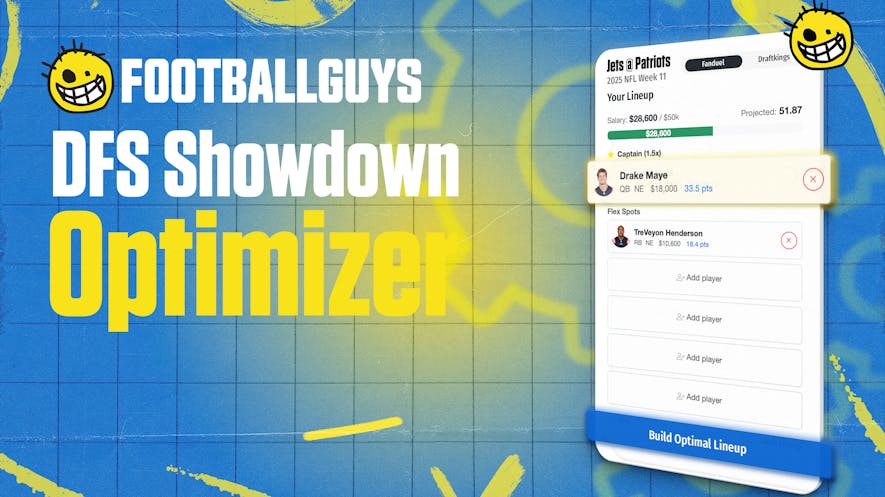There's a lot of really strong dynasty analysis out there, especially when compared to five or ten years ago. But most of it is so dang practical-- Player X is undervalued, Player Y's workload is troubling, the market at this position is irrational, and take this specific action to win your league. Dynasty, in Theory is meant as a corrective, offering insights and takeaways into the strategic and structural nature of the game that might not lead to an immediate benefit but which should help us become better players over time.
Flexible Rosters Bend, Brittle Rosters Break
This week we're continuing our series on simple heuristics, or rules of thumb, to help you succeed in Dynasty. Four weeks ago, I wrote about how complicated models tend to outperform simple heuristics in environments with low uncertainty, but as uncertainty increases, that observation tends to flip. Three weeks ago, I gave two such heuristics that to maximize value in rookie drafts. Two weeks ago, I talked about how maximizing value (instead of chasing wins) was the most sustainable path to long-term success in dynasty, and last week I wrote about how one of the best ways for good teams to remain relevant was to accept short-term pain in exchange for long-term gains.
I always like to write about concepts that naturally lead into and build upon each other to create a scaffolding for success, so this week's column will pick up where last week's left off. I advised that when players were nearing the end of their tenure in your starting lineup, it was usually best to move them for future draft picks, even if those aging players were still providing you with a weekly advantage and even if those draft picks were "only" as valuable as the player in question (i.e., even if the trades were superficially "fair" on both sides).
There's a huge advantage to trades like these beyond the way that they keep your roster young with minimal cost to your title odds in any given season. An advantage that's not captured in the trade calculators or rankings or value charts you might consult. The biggest advantage of these trades, in my experience, is that they keep your roster flexible (as opposed to brittle).
A flexible roster is able to gracefully absorb exogenous shocks and remain competitive. A brittle roster can also be competitive, but it is more dependent on events playing out the proper way. And that leads to today's rule: "Never sell flexibility for fair value".
Using Footballguys' Tools To Illustrate The Point
Let me provide an example. I'm in a dynasty league that gives 2 points per reception to tight ends. In this league, Travis Kelce is such a huge advantage that any team with him on the roster is an immediate title contender.
Indeed, Footballguys' League Dominator has a power rankings tool that estimates the weekly point-per-game average for every team in a given league, and the manager with Kelce is a front-runner to enter the season. (The 2nd-through-4th best teams are projected for between 140 and 142.5 points per game, while teams 5-8 are tightly clustered between 128.4 and 129.3 projected points per game; the manager with Kelce is projected 3rd with 140.9.)
But is this team wholly dependent on Kelce to remain relevant? One can test using the League Dominator's trade evaluator tool. Propose a trade where the team sends off his best player for another player with no 2023 value (in this case, I evaluated a trade of Kelce for Brenton Strange). Under this trade, the team's projected points per game fell from 140.9 to 124.2, which would be the new 8th overall and more than five points per game out of 7th.
A datapoint is useless without context, so for comparison: after likewise losing their most valuable player, the top team's projected average fell from 149.0 to 138.2, the second-best team fell from 142.6 to 134.9, and the fourth-best team fell from 140.1 to 131.9.
Losing your most valuable player will always hurt, but it will not always hurt equally; the manager with Kelce lost 16.7 points per game with him out and fell to 8th, while the other three contenders lost just 8.9 points per game and all remained in the Top 4 (albeit significantly behind the other top contenders). Their rosters were more flexible, while the roster with Kelce is much more brittle.
Being brittle is not necessarily bad (hot take: having Travis Kelce on your fantasy team is good, actually). This team is in an enviable position, and two-thirds of the league would likely swap places if given a choice.
But it does limit this team's ability to respond to adversity. Provided everything goes well (or even provided the right things go wrong), we might never notice the team's brittleness. If the wrong thing goes wrong, this manager better start making plans for 2024.
But Flexibility Isn't Quite That Simple
The exercise of using the League Dominator to estimate team strengths and fragility is a fantastic one, and I strongly recommend you incorporate it into your dynasty routines, but it's not entirely complete. The League Dominator is a tool to evaluate how things are; it lacks the imagination necessary to evaluate how they might be. It assumes that when holes arise, the only possible patches are those that already exist on your roster.
Continue reading this content with a ELITE subscription.
An ELITE subscription is required to access content for Dynasty leagues. If this league is not a Dynasty league, you can edit your leagues here.

